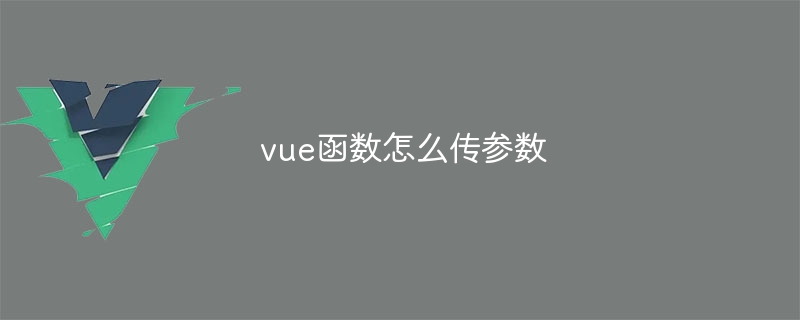向 Vue.js 函数传递参数有两种主要方法:使用插槽传递数据或使用 bind 绑定函数,并提供参数:使用插槽传递参数:在组件模板中传递数据,在组件内访问并用作函数的参数。使用 bind 绑定传递参数:在 Vue.js 实例中绑定函数,并提供函数参数。

在 Vue.js 中,有两种主要方法可以向函数传递参数:
<!-- 父组件 -->
<template>
<my-component>
<!-- 向 my-component 组件传递参数 -->
<param>{{ message }}</param>
</my-component>
</template>
<!-- 子组件 -->
<template>
<div>
<!-- 接收父组件传递的参数 -->
<p>{{ slot }}</p>
<div class="aritcle_card">
<a class="aritcle_card_img" href="/xiazai/code/9178">
<img src="https://img.php.cn/upload/webcode/000/000/001/175825440285637.jpg" alt="织梦绿色农业公司网站模板5.7">
</a>
<div class="aritcle_card_info">
<a href="/xiazai/code/9178">织梦绿色农业公司网站模板5.7</a>
<p>绿色农业公司网站模板源码采用织梦5.7 UTF编码制作,该源码附带栏目数据。安装说明:解压上传到空间,运行域名/install进行安装,安装好后到后台系统-数据备份还原 还原下数据,最新到系统-系统基本参数把网站名称什么的改为自己的即可。详细安装说明在压缩包,可自行查看。</p>
<div class="">
<img src="/static/images/card_xiazai.png" alt="织梦绿色农业公司网站模板5.7">
<span>0</span>
</div>
</div>
<a href="/xiazai/code/9178" class="aritcle_card_btn">
<span>查看详情</span>
<img src="/static/images/cardxiayige-3.png" alt="织梦绿色农业公司网站模板5.7">
</a>
</div>
</div>
</template>
<script>
export default {
props: ['slot']
}
</script><!-- 父组件 -->
<template>
<my-component
:click="greet('Alice')"
/>
</template>
<!-- 子组件 -->
<template>
<div>
<button @click="greetUser">
Greet
</button>
</div>
</template>
<script>
export default {
methods: {
greetUser() {
this.$emit('greet', this.username);
}
}
}
</script>在上面的示例中,父组件使用 :click 绑定将一个带有参数的函数传递给子组件。子组件使用 @click 事件监听器来调用该函数,并将传递的参数作为参数。
以上就是vue函数怎么传参数的详细内容,更多请关注php中文网其它相关文章!

每个人都需要一台速度更快、更稳定的 PC。随着时间的推移,垃圾文件、旧注册表数据和不必要的后台进程会占用资源并降低性能。幸运的是,许多工具可以让 Windows 保持平稳运行。

Copyright 2014-2025 https://www.php.cn/ All Rights Reserved | php.cn | 湘ICP备2023035733号